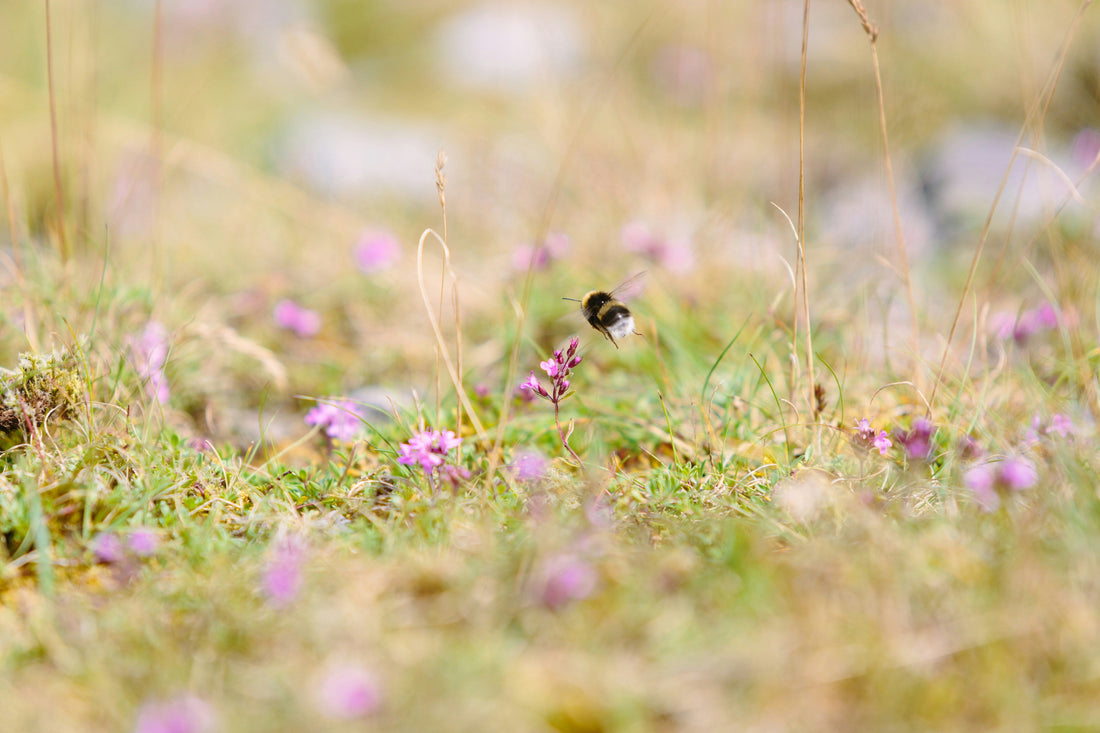Since the late 1990s, beekeepers worldwide have reported alarming declines in bee populations, with honeybee colonies disappearing at unprecedented rates. Bees are crucial not only for honey production but also for pollinating crops that sustain our food supply, from fruits and vegetables to nuts and spices. A staggering one-third of the food we consume depends on pollinators, including bumblebees, butterflies, and other insects. In regions like the UK and the US, commercial honeybee populations have plummeted by up to 45% in recent years, endangering ecosystems and human livelihoods alike.
Reasons Behind The Decline in Bee Population:
Habitat Loss: A Threat to Bees
Changes in land use, including urban development and intensive farming, have led to the loss and fragmentation of pollinator-friendly habitats, depriving bees of diverse food sources and nesting spaces. Since World War II, 97% of wildflower meadows in the UK have disappeared, leaving bees increasingly reliant on protected sites—yet only 6% of these are in good condition.
Intensive Farming
Modern farming practices have destroyed traditional habitats like hay meadows, hedgerows, and ponds. Restoring these areas can boost natural pollination and pest control, reducing the need for chemical pesticides. Sustainable farming methods, such as integrated pest management, are key to reversing these impacts.
Land Use Change
Urban expansion has further fragmented natural habitats, threatening bees and other pollinators. Incorporating green infrastructure, such as wildflower areas, into new developments is essential. Local authorities can also play a critical role by managing green spaces like parks and road verges to support pollinators.
Climate Change: Disrupting Bees
Shifting seasons and warmer, wetter winters are disrupting bee behavior, including nesting and emergence patterns. Climate change also affects the timing of plant flowering, creating mismatches between bees and their food sources. While some species, like the tawny mining bee, have adapted by moving north, others, such as bumblebees, struggle with range shifts. This misalignment threatens crops like apple trees, which may bloom when pollinators are inactive, impacting both bee health and food production.
Pesticides: A Threat to Bees
Pesticides, even when used properly, harm bees by reducing their breeding success, resistance to disease, and ability to navigate or forage. Neonicotinoids, in particular, affect bees’ central nervous systems, disrupting essential behaviors like feeding and reproduction. These toxic chemicals are not only found on farms but also spread to surrounding areas. Additionally, herbicides reduce forage plants in parks and roadsides, further limiting food sources for bees and other pollinators.
Pests and Diseases: A Dual Threat to Bees
Honeybees face threats from pests like the varroa mite, which weakens bees by transmitting diseases, as well as fungal infections that spread within colonies. Some honeybee diseases can also infect wild bumblebees, though their impact on solitary bees remains uncertain. Protecting honeybee health is essential not only for managed hives but also for safeguarding wild bee populations.
Invasive Species: A Threat to Bees
While some non-native species, like Carpenter bees, cause no harm, others can be highly disruptive. The Asian hornet, recently spotted in the UK, poses a serious threat to native bees, and the arrival of the Small Hive Beetle could devastate honeybee and bumblebee colonies.
Consequences of Bee Decline:
The extinction of honeybees would trigger a devastating chain reaction with severe economic, agricultural, and health impacts:
1. Economic Crisis: Bees contribute $14 billion annually to U.S. crop production. Their loss would force farmers and beekeepers out of business.
2. Rising Food Costs: A decline in pollinated crops like fruits, vegetables, and nuts would lead to skyrocketing prices for these essentials.
3. Health Issues: Higher food costs would make fresh produce unaffordable, pushing people toward unhealthy, processed foods.
4. Impact on Livestock: Crops pollinated by bees are essential for feeding dairy and beef cattle. Without them, the livestock industry would suffer.
5. Scarcity and Starvation: As pollinated crops disappear, global food supplies would dwindle, leading to malnutrition and starvation.
Protecting Honeybees: Conservation in Action:
1. Reducing Pesticide Use
Minimizing pesticide use and adopting safer alternatives, such as integrated pest management, protects honeybees while effectively controlling pests through targeted, eco-friendly methods.
2. Restoring Habitats for Honeybees
Restoring and preserving habitats is vital for honeybee survival. Planting wildflower meadows and conserving natural landscapes provide bees with diverse and abundant food sources while reducing habitat fragmentation.
3. Beekeeper Education: Key to Honeybee Health
Educating beekeepers on sustainable practices is essential for conserving honeybees. Training in hive management, disease prevention, and pest control helps reduce colony losses. Best practices include regular health checks, pest monitoring, and responsible use of treatments, ensuring healthier bee populations.
4. Public Awareness and Community Action
Raising awareness about honeybee decline is vital for driving conservation efforts. Educating people on the importance of bees as pollinators can inspire actions like planting bee-friendly gardens and supporting local beekeepers.
Sustainable Farming in Action: A Costa Rican Success Story
In Costa Rica, a farmer adopted agroforestry by growing coffee trees alongside flowering shrubs, transforming the land into a pollinator-friendly habitat. This shift led to a 20% increase in coffee yields and the return of native bee species to the area. The approach not only improved crop production but also enhanced biodiversity, demonstrating the mutual benefits of sustainable farming practices for nature and agriculture.
Conclusion
The decline of bee populations is a critical issue with far-reaching consequences for ecosystems, agriculture, and human livelihoods. However, by reducing pesticide use, restoring habitats, promoting sustainable farming, and fostering public engagement, we can take meaningful steps to protect these vital pollinators. Ensuring the survival of bees is not just about preserving nature—it’s about securing the future of our food systems and the health of our planet. The time to act is now.

